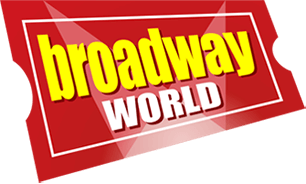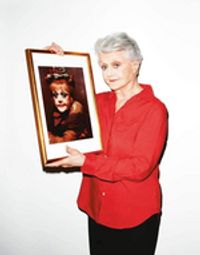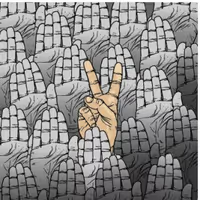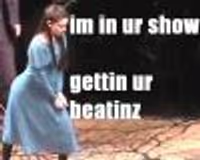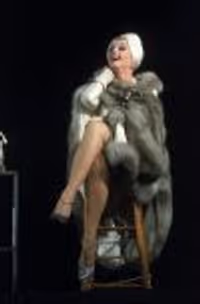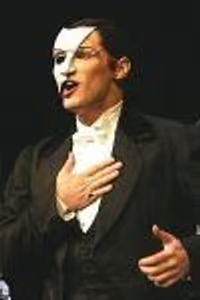The LCD Screen: Is this the future of set design?
#25re: The LCD Screen: Is this the future of set design?
Posted: 8/9/09 at 9:33pm
i dont like the LCD screens at all
i first saw it with Guys and Dolls then again with 9to5 and hated it right away because it does take away from what is going on onstage and from what could be done WITH the stage
knowing now that its used in CMIYC... ive sorta lost any interest
i hope this isnt the future for the theatre
but i agree 100% that it was well used in shrek
#26re: The LCD Screen: Is this the future of set design?
Posted: 8/9/09 at 9:52pmLike people have already said; sometimes it works and sometimes it sucks. My problem with the screens is that it can distract the audience from what is happening onstage. I think the screen worked well in Rock of Ages because it was relatively small (compared to 9to5, Guys&Dolls, and CMIYC) and used wisely.
#27re: The LCD Screen: Is this the future of set design?
Posted: 8/9/09 at 9:54pm
exactly!
i have no problem bringing technology onto the stage but when it looks like a movie and distracts people from the magic of theatre than i think its no good
bwayfan7000
Broadway Legend Joined: 3/28/09
#28re: The LCD Screen: Is this the future of set design?
Posted: 8/9/09 at 9:59pm
I should mention before I say this that I haven't seen CMIYC, but have only watched clips, read reviews, etc.
As far as the LCD screens go, a few thoughts:
1) I read that because of a framing device in the show, it is all supposed to be like a variety show. Wouldn't it, then, be somewhat appropriate to have tv-style screens to further accentuate the variety-tv felling the show is supposed to have?
2) I read on one of the threads on this board that the production is a cheap regional production that will have more money put into it on Broadway or something similar. So there will probably be more than the screen when it moves to Broadway.
#29re: The LCD Screen: Is this the future of set design?
Posted: 8/9/09 at 10:04pm
LED/LCD technology can be a very effective tool if used judiciously to enhance, rather than replace traditional set design, especially in cases of small theaters which lack the facilities and space. For example, I was a film visual effects technician and over 30 years ago when I was still in college, I did volunteer work for a small 99 seat community theater which wanted to mount one of the first regional productions of Stephen Schwartz's PIPPIN. The stage was small and there was barely 10 feet of space behind it which was needed for the actors to travel to their entrances on the opposite side when needed. Also this small theater, which normally used only a piano or two, had the luxury of an 18 piece student orchestra for PIPPIN which also used this space. Traditional set design would have mandated painted backdrops to complete the sets or perhaps rear projection but there was no money or space to do this so I designed a front projection system similar but much simplified to what was used in the film 2001: A Space Odyssey except that we used 3 slide projectors each projecting a third of specially prepared background set matte paintings into mirrors strategically placed in the stage area, which beamed the indirect light onto a curved screen made of lenticular strips which covered the entire rear of the stage. This allowed the actors to work in front of the screen and cast no shadows or reflections on it and the 3 projectors produced enough light to prevent stage light washout. It took many days of experimentation, precise alignment and tedious adjustments to make this work but work it did and it blended in perfectly with the stage props and side scenery. This gave the production a bigness and splendor that would have been impossible to achieve with traditional set design in the space available. How wonderful it would have been if LED/LCD screen technology had been available then; we could have achieved the same effect in a few hours. This will be a wonderful option for small regional theaters that can afford the technology and use it as a solution to problems when traditional scenery and stage design are impossible to achieve in a small space stage environment. If the images displayed are prepared carefully, the effect can be quite realistic, especially as the technology improves. Give it a little more time.
#30re: The LCD Screen: Is this the future of set design?
Posted: 8/9/09 at 10:46pm
An integrated effect like the Rock of Ages interaction is highly interesting and unique, although no one has yet done what Alice Cooper did in his concerts of the seventies...
Cooper had a large movie screen that he could walk in and out of (it was made of ribbon material, so that he could step in and out of any part of it while a movie of him played). He would jump into the screen and a video would play involving him doing something he could NEVER do onstage, such as transforming into a zombie. The cooper on screen walks towards the audience, and the real Cooper pops out, for one example of its usages.
#31re: The LCD Screen: Is this the future of set design?
Posted: 8/9/09 at 11:15pmCan we stop defending shows we haven't seen? Thanks.
broadwayguy2
Broadway Legend Joined: 5/18/03
#32re: The LCD Screen: Is this the future of set design?
Posted: 8/10/09 at 4:10am
BobbyBubby,
I have not seen Catch Me If You Can, so I can not defend or condemn the use of video walls within the production specifically. I am speaking to the genral technology.
monestere,
VERY well said. I hope that my post can elaborate and go into more detail.
AllThatJazz and GoodMorningBWW,
Hairspray NEVER used an LED or LCD screen. On Broadway and the first leg of the First National Tour, each of the pegs on the wall was a dimensional uint with an individual light. The Broadway rig had over 600 individual lights and was so heavy that the gridiron and building had to be reinforced and when it was flown, it had to move slowly.. they were never even sure if it could be stopped quickly once it was beginning to be lowered. Yes, that wall flew in and out during the show. The tour unit was slightly smaller but still required an entire truck to transport, so after the first leg, it was replaced by a SOFT LED drop. A soft LED drop is essentially a standard fabric (Velour, generally) backdrop with LED lights embedded in a grid pattern within the fabric. The LEDs are a bit spaced out, so the resolution is not the greatest. This type of drop is also what is used on the current NETworks tour and, during the cdurtain call, they turn it into a solid wall of color, so you can truly see what the color / image coverage is like.
CSonBroadway,
The larger problem with guys and Dolls was not that they used a LED screen, the issue is the graphics were done poorly and on the cheap. If you have the opporunity, or if someone can scan and upload, you should check out the production's souvenir program. they do a two page spread following the creation of one of the CGI city scapes and you can see what the finished product looks like as a much smaller graphic on paper. It resembles a cheaply made video game. They has everything to do with the budget, designers and execution.. NOT the technology.
A LED / LCD video screen is VERY different and quite remarkable in its construction. Most of the specifics I know for the video panels comes from the information provided by Martin Pro, so I can speak mostly to that. They are modular units that can be pieced together to create a full stage drop, etc, or just a small insert and can provide a pretty solid image. What is really remarkable about them, though, is the fact that when they are off and lit properly with stage lights, the panels become almost COMPLETELY transparent and the construction allows air and stage fog to pass through the panel almost as though they weren't there. When used properly, that could provide for some truly amazing moments.
Right now, LED video screens are suffering from what I call "New Christmas Toy Syndrom." They are the new toy on the block, so everyone wants to play with them and see anything and everything that can be done with them.. and show it off as well. Naturally, that means that some uses will go overboard - some more than others. People thought the same thing about automation and intelligant lighting. Once the technology settles in and becomes more common place, the "wow" factor will be gone and the uses will become increaingly more fluid to the production, better exectuted, less distracting, and less intrusive. It won.t be a matter of showing off the new toy any longer, but really organically building it into the piece as a part of the puzzle and not a focal point. Also, because it is something that we are not used to seeing in a theatrical setting, our eyes are drawn to it because it is new and unfamilair, thereby uncomfortable.
To those who say it is an easy way out, and to rephrase what monestere was saying, it provides a whole other challenge to the lighting design and requires a wholely different collaboration. The lighting has to be MUCH more precise to keep the stage picture in balance so that the LED light does not over power the stage picture, and the light throw angles have to be exacted, not just to the actors and such, but also to avoid hitting the wall at an angle that would wash out the image.
And once again, as monestere and I both stated previously, it provides many new options for small spaces where you would be able to fly multiple (or sometimes even one) drop and it can be used in places where standard projections have been used for YEARS but without, among other things, incredible depth behind the playing space for a rear projection, or the worry of an actor or other object ending up casting a shadow on a front projection.
But really, what is wrong with giving an artist a new tool? The artist just has to learn how to use the tool to produce great work.
#33re: The LCD Screen: Is this the future of set design?
Posted: 8/10/09 at 5:15am
I am also not generally a fan of video screens or projections, although they can certainly be used effectively (the recent revival of Sunday in the Park, for example). I think that too much video detracts from the feeling that you are watching a live production, because none of the "action" in the video is live (the Rock of Ages example being an exception). And I think there is Shiny New Toy syndrome going on as well, with people going overboard on its use in a way that can be both distractingly busy and not very creative. Putting up a video of an unusual setting isn't a very interesting set design choice to me; I'd rather see another solution that I think shows more creativity and creates more interest.
In terms of the Alice Cooper "ribbons" effect, the recent London production of Brief Encounter (which is coming to the US soon) utilized this general concept extremely well. Brief Encounter is another example of how the use of projections and film enhanced the theatergoing experience.
emg_sound
Understudy Joined: 5/3/06
#34re: The LCD Screen: Is this the future of set design?
Posted: 8/10/09 at 8:08am
A few points:
1. It is NOT LCD, it is LED. LCD stands for Liquid Crystal Display, and LED is Light Emitting Diodes, if we're talking about emissive displays, we are generally dealing with LED's, they are actually more flexible in usage than LCDs.
2. Projection IS NOT NEW FOR THEATER!!!!!!!!! For instance, do some research on productions done by the German Director Erwin Piscator in the 1920's (one good example, Hoppla! We're Alive, performed in 192![]() .
.
3. What I'm really curious about is how instead of a static LED wall (such as the Barco wall used in CMIYC), a more dynamic physical manifestation (like Element Labs Helix screen, or VersaTubes, or something https://www.elementlabs.com), which would incorporate it more into the the performance volume.
4. I've more thoughts, but I'm at the Edinburgh Fringe, hunting down more theater which incorporates video, etc. I'll bring more thoughts as I see shows,
AndAllThatJazz22
Broadway Legend Joined: 11/8/08
#35re: The LCD Screen: Is this the future of set design?
Posted: 8/10/09 at 9:03am
"AllThatJazz and GoodMorningBWW,
Hairspray NEVER used an LED or LCD screen. On Broadway and the first leg of the First National Tour, each of the pegs on the wall was a dimensional uint with an individual light. The Broadway rig had over 600 individual lights and was so heavy that the gridiron and building had to be reinforced and when it was flown, it had to move slowly.. they were never even sure if it could be stopped quickly once it was beginning to be lowered. Yes, that wall flew in and out during the show. The tour unit was slightly smaller but still required an entire truck to transport, so after the first leg, it was replaced by a SOFT LED drop. A soft LED drop is essentially a standard fabric (Velour, generally) backdrop with LED lights embedded in a grid pattern within the fabric. The LEDs are a bit spaced out, so the resolution is not the greatest. This type of drop is also what is used on the current NETworks tour and, during the cdurtain call, they turn it into a solid wall of color, so you can truly see what the color / image coverage is like."
We are actually not referring to the First Leg Tour, we're referring to the non-equity tour.
-Danmeg's 10 year old son.
AwesomeDanny
Broadway Legend Joined: 7/30/09
#36re: The LCD Screen: Is this the future of set design?
Posted: 8/10/09 at 11:06am
I'm surprised nobody has mentioned the screen in You're Welcome America. I think it worked for that show because it was kind of like he was giving a power point about his life.
I don't think that screens should replace sets because the whole thing about live theater is that it's live, not something on a TV screen. I think it worked in Rock of Ages because it was there to add, not to replace, which is how I think the screens should be used.
#37re: The LCD Screen: Is this the future of set design?
Posted: 8/10/09 at 11:08amROA is definitely my favorite show with a display screen. As AwesomeDanny pointed out, it added and not replaced. Had there been no screen, it wouldn't have changed the show *that* much.
broadwayguy2
Broadway Legend Joined: 5/18/03
#38re: The LCD Screen: Is this the future of set design?
Posted: 8/10/09 at 12:38pm
AllThatJazz,
You copied the paragraph from my post, but I am not sure that you read it. ![]() I followed the path of the wall from Broadway through the First National Tour, to the current Networks tour. The LED drop used on the Networks tour is the same exact type of drop used on the First National Tour.. "This type of drop is also what is used on the current NETworks tour and.."
I followed the path of the wall from Broadway through the First National Tour, to the current Networks tour. The LED drop used on the Networks tour is the same exact type of drop used on the First National Tour.. "This type of drop is also what is used on the current NETworks tour and.."
emg_sound,
Very good post. I look forward to hearing more about your trip. Really and truly, the use of video is no different than projections, which, as you say, have been around for EVER. I am also curious as to how VersaTubes will be used in the near future.
I just think this is absolutely ridiculous to condemn and an etire technology because you don't like how it has been used in a few shows.. and if it has moving graphics, it is still a live performance, with live actors, in a more dynamic, moving environment and graphics that, no different than a standard painted drop, have to be designed and painted by artists.
Why are people stuck on this idea that it makes theatre not "live" and that it is like watching on the show on a TV screen? The performances is live.. it is simply a different type of backdrop.
njhsdirector
Swing Joined: 7/21/09
#39re: The LCD Screen: Is this the future of set design?
Posted: 8/10/09 at 1:19pmAlmost 20 years ago, I saw my first musical that used LCD/LED/projected scenery and that was a tour verision of "H2$" with Ralph Macchio. I was blown away with what they could do with the technology! Several years later, I was working at a HS in Virginia that had a professional lcd projector and a computer teacher/technician that had experience in designing for plays and musicals. Our first production was " The Wizard of OZ", which was a success. Since that time, i have used projection technology for a lot of plays and muscials which saves me time in painting backdrops and large flats. BTW, Radio City uses lcd/led projections for its Christmas show and noone complains about that!
AndAllThatJazz22
Broadway Legend Joined: 11/8/08
#40re: The LCD Screen: Is this the future of set design?
Posted: 8/10/09 at 1:21pm
broadwayguy2.
WOOSP!!! Sorry, 9:03 AM might have been a little too early for me ![]()
-Danmeg's 10 year old son.
#41re: The LCD Screen: Is this the future of set design?
Posted: 8/10/09 at 1:51pm
I have to agree with broadwayguy2. Any designer knows that as long as a design suits the concept, show, and most importantly the story, then using a certain design is every bit justified.
This of course, applies to the LED/LCD screen as a new form of design in theatre, though it's not even THAT new. A designers job above all is to tell the story, just as it is the job of the actors, directors, crew, and producers. If they have not done that, then they have not done their job.
If an LED/LCD screen suits the story and it's concept, then by all means use it. And yes, that even means using an LED screen as the entire set. If it conveys the story effectively, then there is no problem. Lately I don't think it has been used effectively. I haven't seen it as a necessity to all of the past productions that have used it. BUT, it CAN be used effectively and it should not be disregarded upon its mentioning.
As a studying scenic designer I will usually stray away from using an LED screen as my sole set because I don't like the look. However, new design challenges always arise and I very well may change my mind should the sole LED screen suit the concept.
It is also a possibility to only use LED screens as a set and place multiple, large, screens in different places on the stage to create an effective design.
#42re: The LCD Screen: Is this the future of set design?
Posted: 8/10/09 at 2:36pm
My problem with the current LED displays is simple: the resolution is pretty horrible. I sat in the 5th or 6th row for "Dirty Dancing" and the pixelation on the screens was readily apparent. Drive down the Las Vegas strip and take a look at the current state-of-the-art of LED display boards. If you're hundreds of feet away from them, they're cool. But get close and eccch.
Notice on American Idol that when a wide shot of the stage is shown, the huge LED display looks fine. When the camera switches to a close-up of the performer, the individual LED elements can be seen, which can be quite distracting.
As for 9 to 5, I saw it in Los Angeles from the balcony, and the LED display was nowhere as nice as rear projection.
Updated On: 8/10/09 at 02:36 PM
broadwayguy2
Broadway Legend Joined: 5/18/03
#43re: The LCD Screen: Is this the future of set design?
Posted: 8/10/09 at 3:35pm
Yeah, the resolution is a problem, but the technology is still evol;ving and the qaulity varies WIDELY based upon the budget and such, but being close in, the individual elements can often be a problem, giving a very pixelated effect. Measures can be taken to soften it though. For example, a scrim just downstage of the screen provides a slight filter to allow the elemnts to blur into on another.
The major problem with rear projection is the depth required behind the projection surface, which may need to be EXTREMELY deep and also negatives a Vast amount of space that could be otherwise used. You also have the prblem of light spill and residual light leakage from the machine if you try to go an immediate blackout.
Filming an LED screen, such as on American idol, makes the pixelation worse because the camera focus isolates each of the individual LED elements.
The LED walls and panels also give you freedom to do things that standard projection wouldn't allow.. at least in a reasonable fashion. When dealing with a projection, the projector and the surface must be perfectly alligned, if either is the least bit off, the effect is compromised. That doesn't factor in to the use with an LED panel. Also, the LED panel can travel, whereas it is VERY difficult to have a projector and a projection surface travel with the precision required to maintain the effect while moving across the stage.
Huey,
I understand the point you are trying to bring up with the Vegas LED boards, but I do feel it should be pointed out, in fairness, that the type of LED element and the style of construction is vastly different than what could, and should, be used in a smaller theatrical setting.
Sondheimgeek,
Thank you. ![]()
To go with more examples of LED screen vs projection examples, Jersey Boys on Broadway uses projection for the cartoon strips that are seen, but in at least the Las Vegas production, the projection has been replaced by LED panels, as they can be much easier to deal with.
willrogers2008
Featured Actor Joined: 12/9/08
#44re: The LCD Screen: Is this the future of set design?
Posted: 8/10/09 at 11:09pmCould some good soul please scan the page of Guys and Dolls souvenir program where the development of the cityscape images were done ? I do not live in the United States and I am dying to see it.Thanks in advance !
broadwayguy2
Broadway Legend Joined: 5/18/03
#45re: The LCD Screen: Is this the future of set design?
Posted: 8/11/09 at 12:39amI've been meaning to purchase the program and I don't have a scanner, so I was unable to, but it features text from the designer and the progression from initial rough sketch to final graohic, which is very, very poor.
#46re: The LCD Screen: Is this the future of set design?
Posted: 8/11/09 at 5:55am
is it the future...
God, I really hope not. I think LCD screens should be classified as lighting instruments, not set pieces.
Videos
